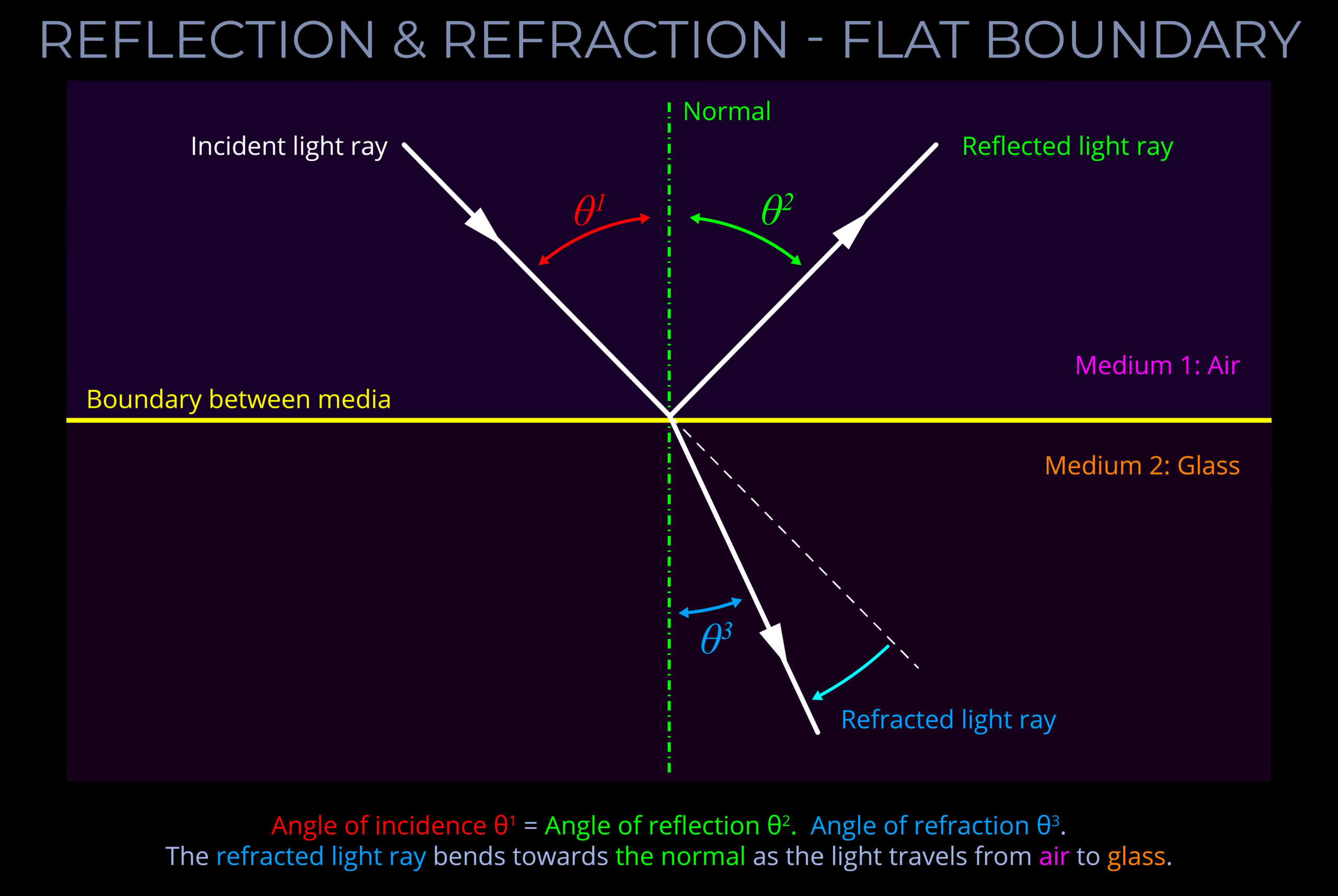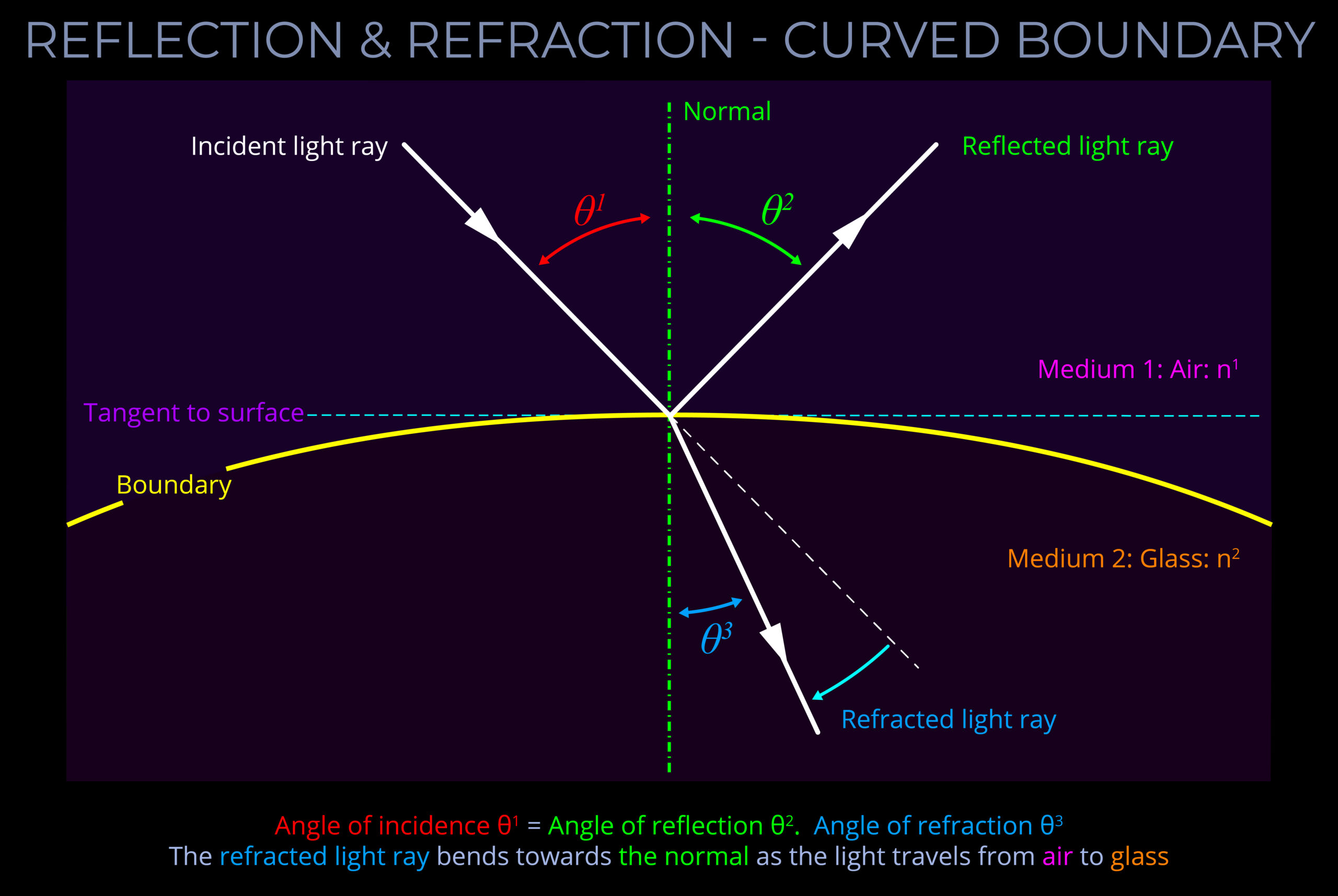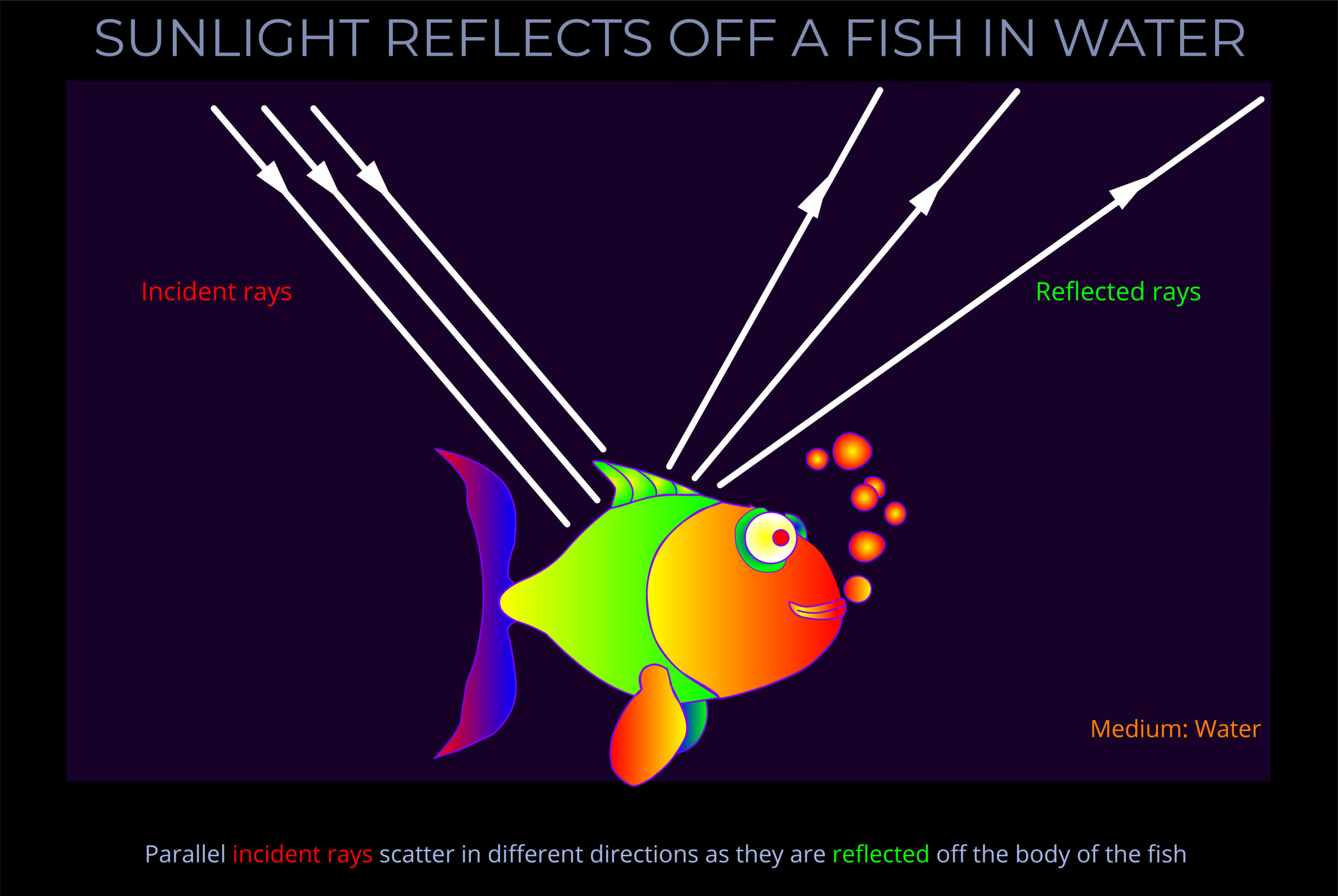The angle of reflection is the angle between the incident light ray and the reflected light ray, both measured from an imaginary line called the normal.
- According to the law of reflection, the angle of incidence (the angle between the incident ray and the normal) is always equal to the angle of reflection.
- The angle of reflection is measured between the reflected ray of light and an imaginary line perpendicular to the surface, known as the normal.
- In optics, the normal is a straight line drawn on a ray-tracing diagram at a 90º angle (perpendicular) to the boundary where two different media meet.
- Expressed more formally, in optics, the normal is a geometric construct, a line drawn perpendicular to the interface between two media at the point of contact. This conceptually defined reference line is crucial for characterizing various light-matter interactions, such as reflection, refraction, and absorption.
- If the boundary between two media is curved, the normal is drawn perpendicular to the tangent to that point on the boundary.
- Reflection can be diffuse (when light reflects off rough surfaces) or specular (in the case of smooth, shiny surfaces), affecting the direction of reflected rays.
About the laws of reflection
When light reflects off a surface or object, it behaves predictably, following three laws known as the laws of reflection.
- The three laws of reflection are:
- The incident ray, the reflected ray, and the normal to the surface all lie within the same plane.
- The angle of incidence, which is the angle between the incident ray and the normal, is equal to the angle of reflection, which is the angle between the reflected ray and the normal.
- The incident ray and the reflected ray are always on opposite sides of the normal, and all three lie within the same plane.
- The angle of reflection measures the angle at which reflected light bounces off a surface.
- The angle of reflection is measured between a ray of light which has been reflected off a surface and an imaginary line called the normal.
- See this diagram for an explanation: Reflection of a ray of light
- In optics, the normal is a line drawn on a ray diagram perpendicular to, so at a right angle to (900), the boundary between two media.
- If the boundary between the media is curved then the normal is drawn perpendicular to the boundary.


